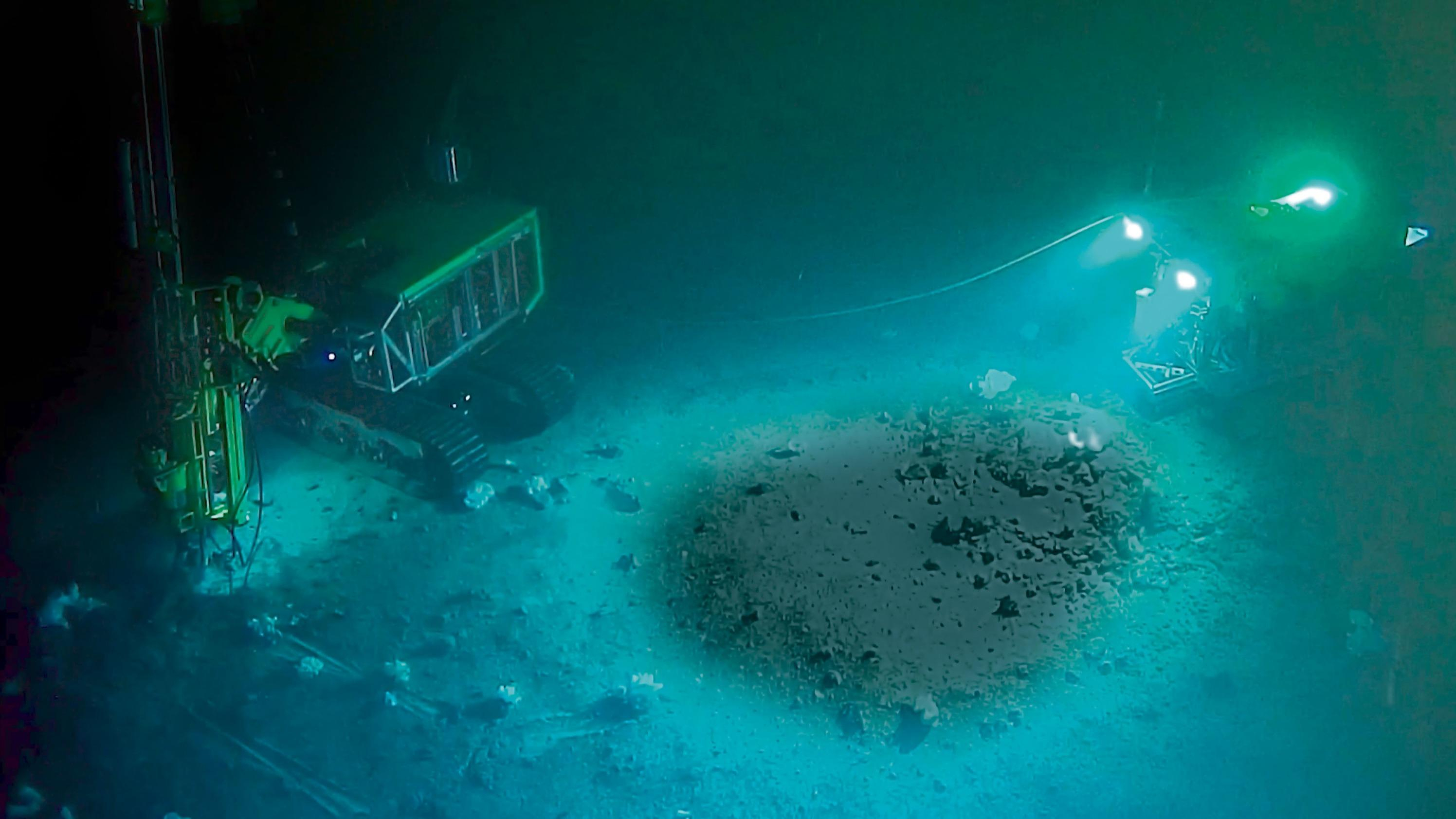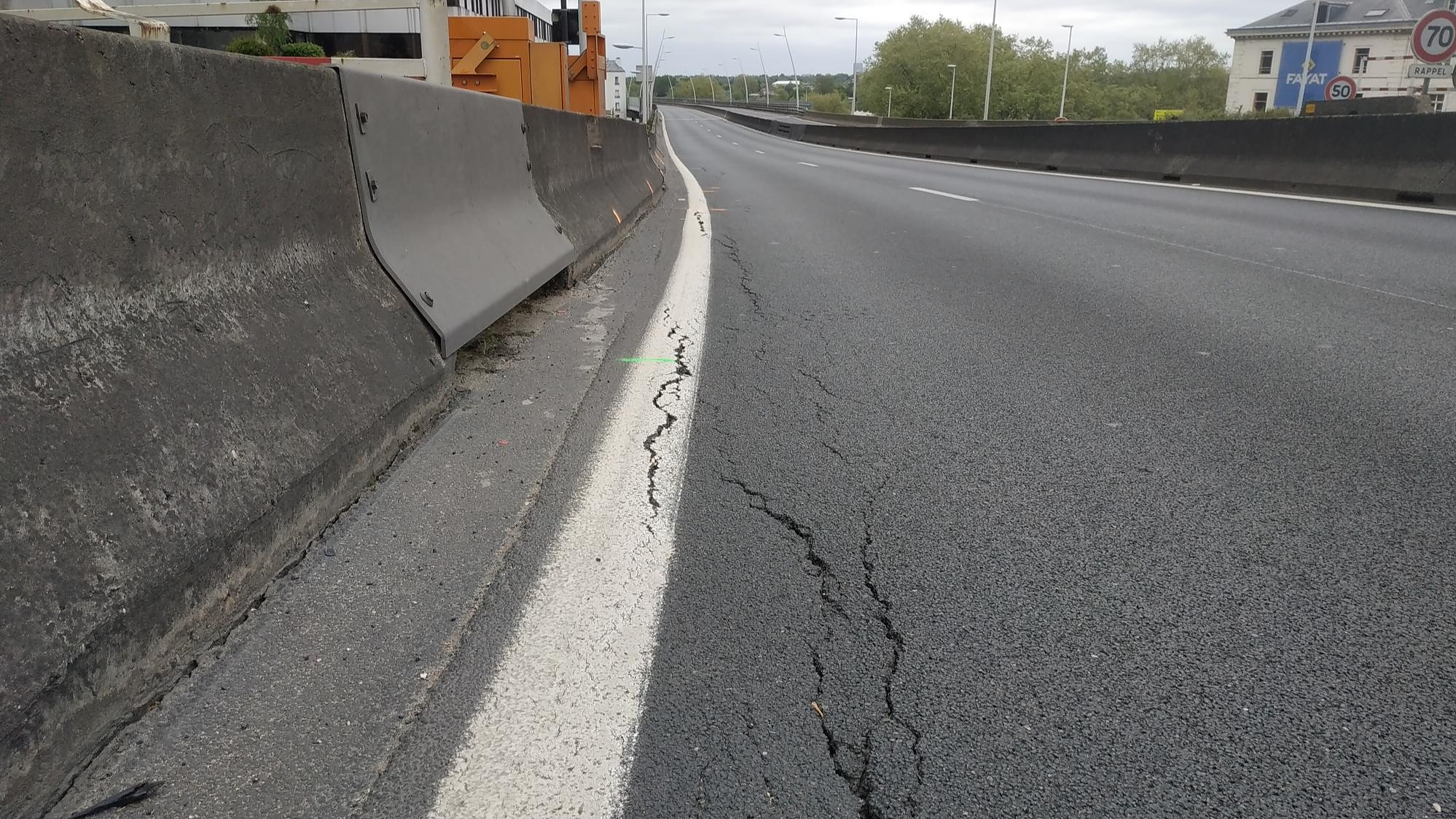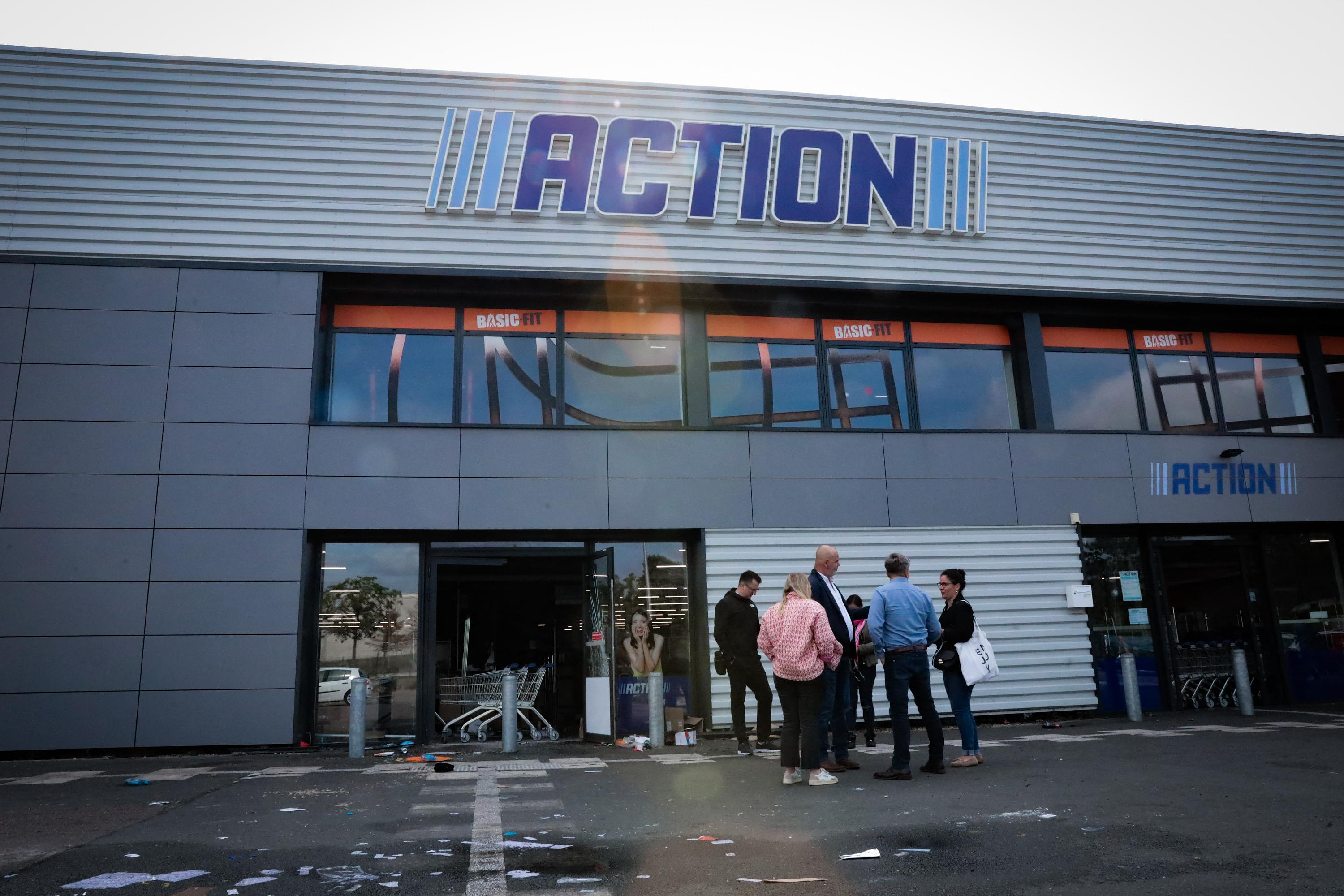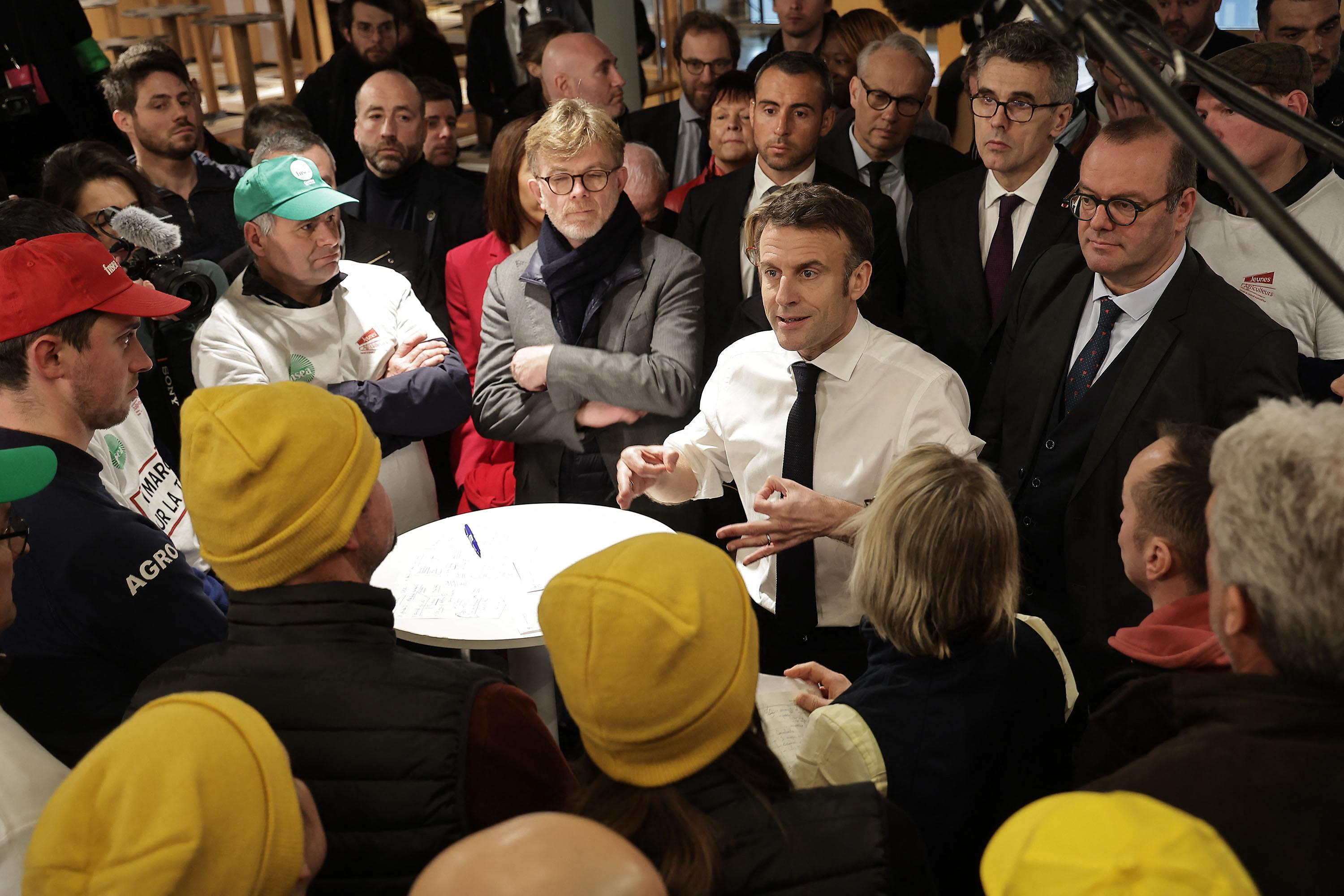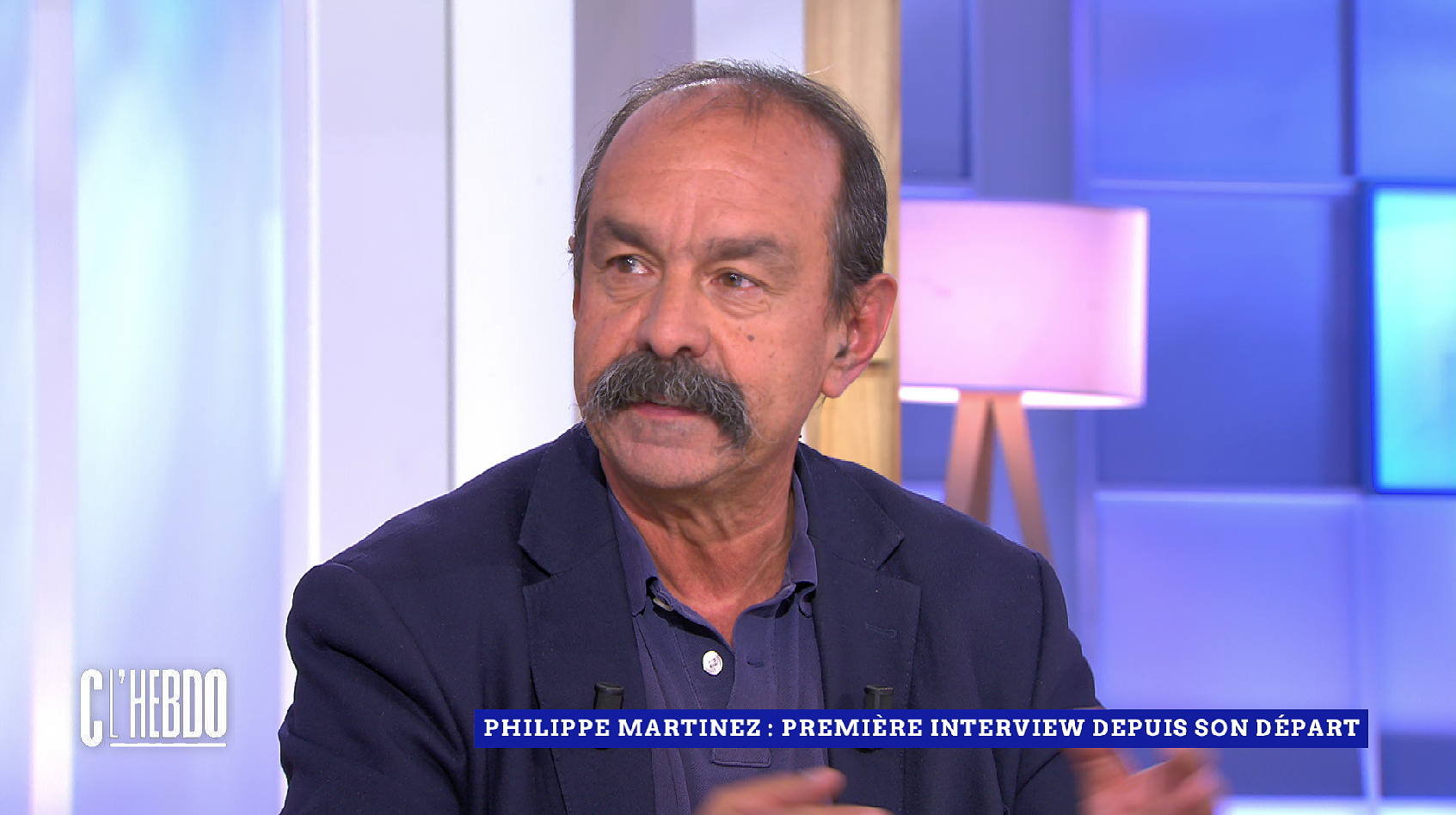On the road leading to the Norwegian Petroleum Directorate (NPD), a derrick, around thirty meters high, overlooks the Sørmarka forest. Built 45 years ago to test and simulate drilling techniques, it sits on the Stavanger campus as a witness to the great epic of black gold. In 1969, it was in this port city, located in the southwest of Norway, that the country's first offshore deposit and one of the most productive still in operation was discovered off the coast of the North Sea.
In its basements, which resemble the reserves of a museum, the NPD secretly preserves half a century of underwater exploration history: core samples, rock samples, palettes of sediments are stored there in thousands of boxes. in wood. Some of them have the word “treasure” written on them. “What treasure is this?” “, we ask geologist Hilde Braut. “This is tomorrow’s treasure,” she smiles, showing us three rock fragments.
Also read: A helping hand for new mines in France
“These ores were taken at a depth of 3000 meters, in the southern Arctic Ocean, in the Vøring Basin and on the Mohns Ridge. Two sites that are potentially rich in mining resources,” she admits. Seemingly innocuous, these rocks nevertheless contain a highly coveted wealth: metals and rare earths, essential to the ecological transition. “This sulphide ore is rich in copper, which can be seen in its green color caused by the atacamite crystals. This other ore is enriched in iron. This contains high levels of manganese and cobalt. That’s why they say it’s a treasure,” she says.
Fifty-five years after the start of its oil rush, Norway dreams of becoming a pioneer in the industrial exploitation of underwater metals. On January 9, Parliament gave the green light to mining prospecting in an area of 281,000 square kilometers, with a view to future extractions. Located between the island Jan Mayen and the Svalbard archipelago, the place was not chosen at random. Exploration campaigns have already identified 12 sulfide fields and 27 manganese crust deposits.
An underwater El Dorado, which according to the NPD, would be worth billions: according to its estimates, it would contain 3 million tons of rare metals, 4 million tons of cobalt, 38 million tons of copper, but also lithium, magnesium, titanium and 185 million tonnes of manganese, or nine times the annual global production. “We need to take a close look at these resources because we know that green technologies are one of the solutions to solving the problems of the climate challenge,” argues geologist Hilde Braut.
Used in the manufacture of wind turbines, solar panels and batteries for electric vehicles, these strategic metals whet appetites. Several Norwegian companies and universities such as Bergen and Trondheim have started to develop machines capable of collecting these ores from great depths. Underwater drones, autonomous robots, remotely operated collectors, these vehicles are currently designed in the greatest secrecy. A company agreed to open its doors to us. Direction Søgne, at the southern tip of the country. That morning, the city's industrial zone was battered by rain and strong winds. “We are used to this weather here. Have you find easily ? ", asks Andreas Svanlund, marketing director of Seabed Solutions.
Specializing in land extraction equipment, the company purchased an underwater excavator in 2019, belonging to a wreck hunter. An investment of 8 million euros. “We are convinced that the mines of tomorrow are at the bottom of our oceans,” he bets. In the years to come, we will need ten times more minerals than we are capable of producing today. It therefore seems logical to us to explore areas where their concentration is high. We have the resources and the know-how. Norway must play a role in contributing to the mineral balance between East and West. Today, China controls the entire supply chain, from production to refining. She sets the prices. If we want to escape from this dependence, we must exploit our resources ourselves,” he continues.
Returning from a mission in the Norwegian Sea, the excavator spent a week underwater. An underwater construction site, 4000 meters deep. Powered by electricity by a huge steel cable and piloted by two operators from a ship, it was to carry out coring tests. “Look at its drilling head,” Bård Brekke Jørgensen, technical director of Seabed Solutions, shows us. The hole she digs is no more than 15 centimeters in diameter. Our work consists of verifying the reliability of our equipment, but also of measuring the impacts that these operations could have on the environment. Because for the moment, this is the great unknown. »
This is what bothers Ruben Oddekalv the most: ignoring the consequences of such mining on the seabed. “There are very few studies carried out on the impacts,” regrets the leader of the green warriors, the nickname given to members of the Norwegian Environmental Association. However, we would need to know how previously preserved ecosystems will support these projects. The country is opening an area rich in biodiversity to mining prospecting and, despite this, is committed to the defense of the oceans, by signing the treaty for the protection of the high seas. "It's totally incomprehensible," he explains.
Also read: A drone to neutralize underwater mines
In his offices in a house on stilts in Bergen, Ruben says he is ready to “fight a battle” to ban underwater mines. “You want proof that all this will pollute the oceans? » he asks us. On his laptop, he shows us images shot by a robot's camera, taking rock samples at a depth of 2,500 meters with telescopic pliers. “Look at this plume of sediment, caused by the extraction of this ore weighing only a few kilos. Now imagine the magnitude of these plumes if we were to extract tons of rock. These gigantic clouds will stagnate suspended in the water and spread everywhere. There are no boundaries in the ocean. These plumes will be uncontrollable. At some point, industry and fishing will intersect and this will endanger food security and fishing itself,” he worries.
If he does not call into question the principle of ecological transition, Ruben Oddekalv asks Parliament to study alternatives, such as recycling. “We need to use our resources better,” he recommends. The Norwegian army, for example, got rid of old ammunition which contains quantities of metals. They were sunk off our coast. Why not use it? »
In Oslo, in the ministerial district, the issue of underwater mines is not taboo. On the contrary. At the Ministry of Energy and Oil, Andreas Bjelland Eriksen (now Minister of Climate and Environment, Editor's note) is not looking for controversy. If no extraction permit has yet been issued, each project will be subject to an evaluation to ensure that all environmental guarantees are met.
Also readIn the incredible cavern of the Barracuda nuclear submarines
“The Norwegian government is prepared to say no at any time if we discover, through the research and information we collect, that it is not possible to do this in a sustainable and consistent manner, with acceptable impacts on the natural habitat of our oceans,” he argues.
Return to Bergen. It's 5 p.m. Tourists crowd the pier to board the last shuttles which sail from fjord to fjord. The lights on the multicolored facades of the town's houses light up and, in front of the seafood restaurants, waiters attract travelers to come and taste the famous fiskesuppe, the local bouillabaisse. Moored right next door, the G.O. Sars is preparing to weigh anchor.
This 78 meter vessel, belonging to the Marine Research Institute, is going on an expedition to the Greenland Sea. For three weeks, around thirty scientists will probe its depths to carry out an inventory of the species living near a sulphide deposit. “We have little knowledge about these ecosystems, their unique character, their structure and their functioning. Their study will allow us to know to what extent they will be affected by human activity,” says Frode Vikebø, program director at the Marine Research Institute.
Previous expeditions had highlighted the richness of the area: sperm whales, rorquals, whales, herring, mackerel and halibut, a species of fish that uses the seabed as grazing areas. “If there was mining activity there would be sound and noise from machinery which could cause decay or destruction of habitats. We know that there is a high density of filter-feeding organisms, such as sponges, corals and anemones. If they are removed from an area, they recolonize it very slowly. Which means any impact would be long-lasting. » Professor Pedro Ribeiro knows something about this.
An expert in Arctic ecosystems, he is currently conducting research on endemic species growing on manganese crust deposits. Particularly on specimens of Geodia sponges, living at a depth of 1500 meters. “If sediment covers them, how much will cause them to die? Impossible to determine. We know that they have the capacity to resist variations, but with what limit? Most deep-sea environments are fairly constant in terms of temperature and turbidity. But if we disrupt these indicators, how will ecosystems react? » he notes.
On the shores of the North Sea, the children's garden, located opposite the Stavanger Oil Museum, is built from old oil rig equipment. We sit on benches shaped like drill rods, the trampolines are orange buoys and we play hide and seek behind exploration capsules. This is where Walter Sognnes arranged to meet us. This 61-year-old geophysicist has spent his entire career in oil, before embarking on prospecting for polymetallic nodules in the middle of the Pacific Ocean. “I brought a few back. » In his hand, five black pebbles, no bigger than a potato, brought up from the Clarion-Clipperton area, at a depth of 4,000 meters. “Inside there are high levels of nickel, copper, cobalt, manganese and iron. And there are astronomical quantities of it at the bottom of the water,” exults the founder of the company Loke Marine Minerals.
According to estimates, between 20 and 30 billion tonnes of these pebbles cover the abyssal plains around Clarion-Clipperton. An area of 6 million square kilometers, located between Mexico and Hawaii, which is administered by the International Seabed Authority (IAFM), an intergovernmental body founded in 1994 under the auspices of the UN. Around fifteen countries, including France, hold concessions in the form of exploration contracts via private or public companies. Walter's company has two, equivalent to an area of 133,000 square kilometers.
Also read: Rare earths: an old coal mine bought for $2 million could be worth... several billion
To collect these nodules, she has developed a sort of combine harvester, the prototype of which is currently being tested in California. “Please note, it is not a question of plowing the seabed,” corrects Walter Sognnes, “but rather of digging up these nodules without touching the ground in order to avoid the creation of plumes of sediment. The rocks are then sent to the surface in a riser and then stored in a vessel. The water will then be cleaned and released without sediment,” he promises.
However, the jackpot is not yet there yet. Although he does not yet have the green light from the AIFM, which must first develop a mining code, Walter hopes to obtain authorizations quickly. With one objective: to harvest 2 million tonnes of nodules per year by 2031.

 B:SM will break its investment record this year with 62 million euros
B:SM will break its investment record this year with 62 million euros War in Ukraine: when kyiv attacks Russia with inflatable balloons loaded with explosives
War in Ukraine: when kyiv attacks Russia with inflatable balloons loaded with explosives United States: divided on the question of presidential immunity, the Supreme Court offers respite to Trump
United States: divided on the question of presidential immunity, the Supreme Court offers respite to Trump Maurizio Molinari: “the Scurati affair, a European injury”
Maurizio Molinari: “the Scurati affair, a European injury” Irritable bowel syndrome: the effectiveness of low-carbohydrate diets is confirmed
Irritable bowel syndrome: the effectiveness of low-carbohydrate diets is confirmed Beware of the three main sources of poisoning in children
Beware of the three main sources of poisoning in children First three cases of “native” cholera confirmed in Mayotte
First three cases of “native” cholera confirmed in Mayotte Meningitis: compulsory vaccination for babies will be extended in 2025
Meningitis: compulsory vaccination for babies will be extended in 2025 When traveling abroad, money is a source of stress for seven out of ten French people
When traveling abroad, money is a source of stress for seven out of ten French people Elon Musk arrives in China to negotiate data transfer and deployment of Tesla autopilot
Elon Musk arrives in China to negotiate data transfer and deployment of Tesla autopilot Patrick Pouyanné, CEO of TotalEnergies, is very reserved about the rapid growth of green hydrogen
Patrick Pouyanné, CEO of TotalEnergies, is very reserved about the rapid growth of green hydrogen In the United States, a Boeing 767 loses its emergency slide shortly after takeoff
In the United States, a Boeing 767 loses its emergency slide shortly after takeoff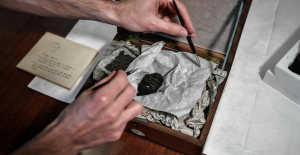 A charred papyrus from Herculaneum reveals its secrets about Plato
A charred papyrus from Herculaneum reveals its secrets about Plato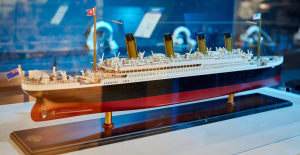 The watch of the richest passenger on the Titanic sold for 1.175 million pounds at auction
The watch of the richest passenger on the Titanic sold for 1.175 million pounds at auction Youn Sun Nah: jazz with nuance and delicacy
Youn Sun Nah: jazz with nuance and delicacy Paris Globe, a new international theater festival
Paris Globe, a new international theater festival Skoda Kodiaq 2024: a 'beast' plug-in hybrid SUV
Skoda Kodiaq 2024: a 'beast' plug-in hybrid SUV Tesla launches a new Model Y with 600 km of autonomy at a "more accessible price"
Tesla launches a new Model Y with 600 km of autonomy at a "more accessible price" The 10 best-selling cars in March 2024 in Spain: sales fall due to Easter
The 10 best-selling cars in March 2024 in Spain: sales fall due to Easter A private jet company buys more than 100 flying cars
A private jet company buys more than 100 flying cars This is how housing prices have changed in Spain in the last decade
This is how housing prices have changed in Spain in the last decade The home mortgage firm drops 10% in January and interest soars to 3.46%
The home mortgage firm drops 10% in January and interest soars to 3.46% The jewel of the Rocío de Nagüeles urbanization: a dream villa in Marbella
The jewel of the Rocío de Nagüeles urbanization: a dream villa in Marbella Rental prices grow by 7.3% in February: where does it go up and where does it go down?
Rental prices grow by 7.3% in February: where does it go up and where does it go down? Even on a mission for NATO, the Charles-de-Gaulle remains under French control, Lecornu responds to Mélenchon
Even on a mission for NATO, the Charles-de-Gaulle remains under French control, Lecornu responds to Mélenchon “Deadly Europe”, “economic decline”, immigration… What to remember from Emmanuel Macron’s speech at the Sorbonne
“Deadly Europe”, “economic decline”, immigration… What to remember from Emmanuel Macron’s speech at the Sorbonne Sale of Biogaran: The Republicans write to Emmanuel Macron
Sale of Biogaran: The Republicans write to Emmanuel Macron Europeans: “All those who claim that we don’t need Europe are liars”, criticizes Bayrou
Europeans: “All those who claim that we don’t need Europe are liars”, criticizes Bayrou These French cities that will boycott the World Cup in Qatar
These French cities that will boycott the World Cup in Qatar MLS: new double for Messi who offers victory to Miami
MLS: new double for Messi who offers victory to Miami PSG-Le Havre: Ramos on his way, Kolo Muani at the bottom of the hole… Favorites and scratches
PSG-Le Havre: Ramos on his way, Kolo Muani at the bottom of the hole… Favorites and scratches Football: Vasco da Gama separates from its Argentinian coach Ramon Diaz
Football: Vasco da Gama separates from its Argentinian coach Ramon Diaz F1: for the French, Ayrton Senna is the 2nd best driver in history ahead of Prost
F1: for the French, Ayrton Senna is the 2nd best driver in history ahead of Prost